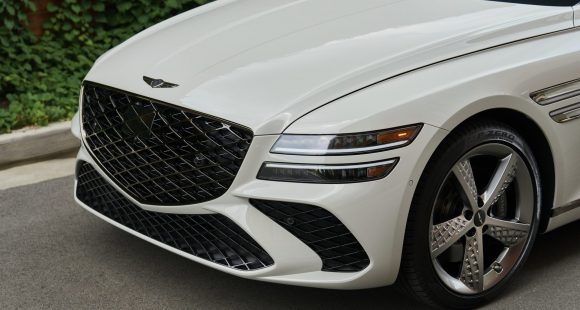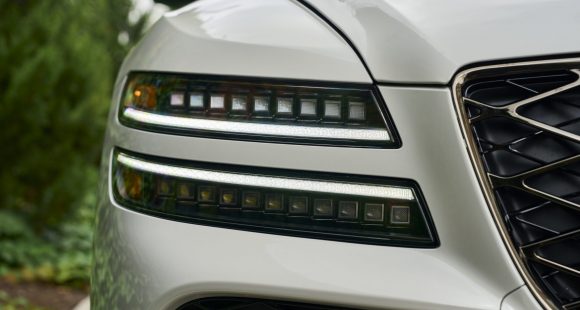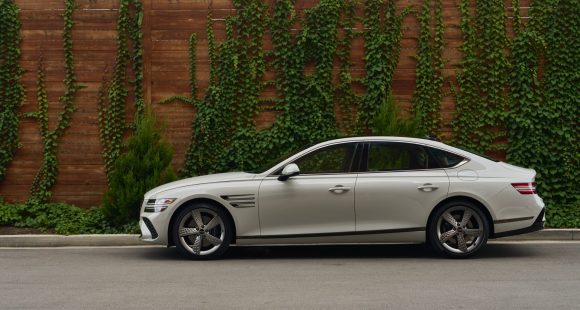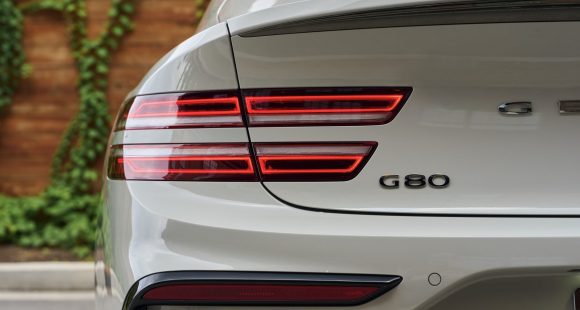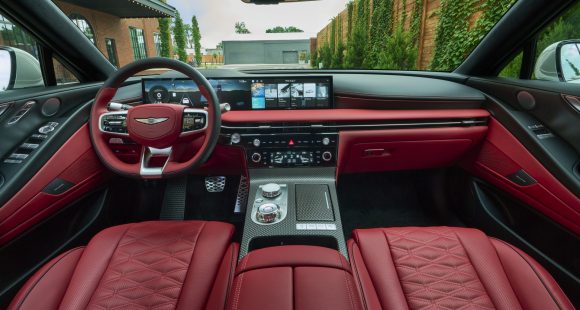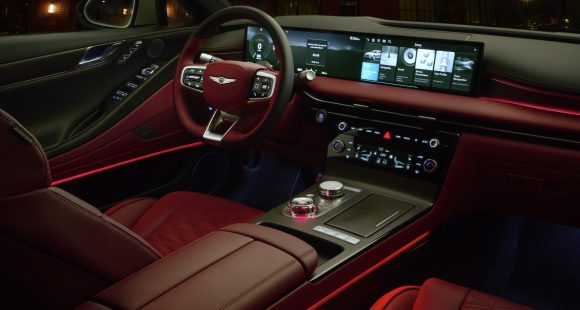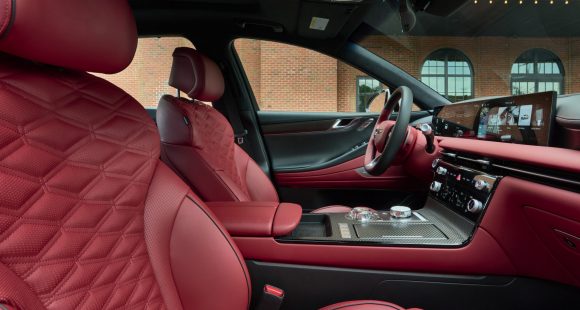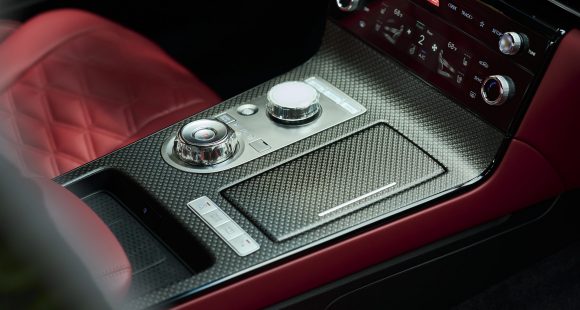2011 Buick Regal
While most buyers think of Buick as a posh, premium brand, their performance car history actually dates back to the legendary straight-8s of the 1930s. In more recent decades, the Regal nameplate carried the best of Buick’s performance intensions. So it makes sense that when Buick planned an all-new, mid-size sports sedan that the Regal name would once again appear. But this Regal is not like any Buick we’ve driven before.
After a six-year absence, the Buick Regal returns for 2011 as an all-new Euro-bred, front-drive sports sedan. Developed at Germany’s famed Nurburgring, the new Regal is a near doppelganger to the Opel Insignia – Europe’s 2009 Car of the Year, and the most promising entry from GM’s tri-shield division since the Grand Nationals of the 1980’s. To that end, the Regal will compete with premium-level sports sedan like the Audi A4, Acura TSX, Volkswagen CC, and Volvo’s new S60.
Initially imported in premium CXL trim only, the Regal touts the same sleek and upscale design language, but adds a healthy dose of frontal aggression from the LaCrosse and Enclave - an oversized Buick waterfall grille, flanked by prominent, swept-back, non-HID headlamps.
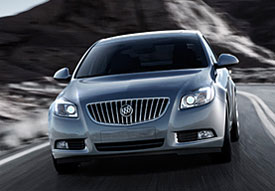 The Regal’s sculpted coupe-like profile features a fast, flowing roofline, sharp body creases, and flared fenders, exuding a performance-oriented spirit. The tapered rear wears an abbreviated deck and bold tail lamps, both hallmarks of the contemporary sports sedan. Standard alloy wheels are 18-inch, with 19s optional.
The Regal’s sculpted coupe-like profile features a fast, flowing roofline, sharp body creases, and flared fenders, exuding a performance-oriented spirit. The tapered rear wears an abbreviated deck and bold tail lamps, both hallmarks of the contemporary sports sedan. Standard alloy wheels are 18-inch, with 19s optional.
Power will be a surprise to some, four cylinder direct-injected powertrains only from GM’s Ecotec family. The standard 2.4-liter, shared with the Lacrosse and Chevy Equinox, delivers 182 horsepower and 172 pound-feet of torque.
Optional is a 2.0-liter twin-scroll turbo with 220 horsepower and 258 pound-feet of torque. An even higher-performance turbo GS arrives next year. The 2.4 is mated to a self-shift six-speed automatic, while the 2.0 turbo offers a proper six-speed manual as standard and automatic as option. Unfortunately, for our test runs only a 2.4 automatic was available.
And while it felt pretty peppy off the line, it was only adequate overall; taking a longish 9.4 seconds to get to 60, and 17 seconds to complete the quarter mile at 84 miles per hour. We’d definitely opt for the 2.0 turbo. But, it is taking corners where this Regal shines brightest. The Epsilon II chassis, with its strut-type front, and four-link rear suspension, both with a hollow stabilizer bar, delivered an impressive level of agility and nimbleness.
Turbo models add a fine Interactive Drive Control System. Its three modes - Standard, Tour, or Sport - alter suspension settings, steering sensitivity, throttle response, and shift pattern. Stopping hardware is all disc ABS brakes. Our car met hard stops with a 60 to 0 average of 129 feet, all straight and smooth.
This Regal meets all the European sports sedan cliches. It handles like it’s on rails. It feels bolted to the road. But you’ve got to remember, this is a Buick and it’s made in Germany, and that puts this Regal in a whole new light. The Regal’s spacious and well-appointed cabin combines classic Buick styling with modern sports sedan cues.
 Fit and finish are on par with anything in the premium segment, although the dash is mostly hard plastics. On the other hand, gauges and controls exude a decidedly upscale quality.
Fit and finish are on par with anything in the premium segment, although the dash is mostly hard plastics. On the other hand, gauges and controls exude a decidedly upscale quality.
Seats are well-positioned, firm, and nicely-bolstered. Leather upholstery and seat heat come standard. Enhancing occupant comfort is standard auto climate with humidity sensor. For piping in your favorite driving music, there’s a seven-speaker stereo or an upgraded nine-speaker Harman Kardon audio system.
But oh-so European is the absence of an available rear view camera. As is the console mounted, multi-function central controller for Stereo, Nav, Bluetooth, and even OnStar. The rear seat is comfortable for two adults, but tight for three. And the 60/40 split-folding feature adds length to the already very usable 14.3 cubic foot trunk.
Government Fuel Economy Ratings for the Regal 2.4 are 19 city/30 highway. We achieved a fine 27.1 on regular in real-world driving. The Energy Impact Score is 14.9 barrels of oil consumed per year. The Carbon Footprint is a relatively modest 8.1 annual tons of CO2 emitted.
Pricewise, the new Regal is very competitive. The 2.4 CXL has a base sticker of $26,995. The CXL Turbo starts at $29,495. More models and a lower entry price will follow when Regal production moves to the U.S. next year.
Despite its stodgy name, the 2011 Buick Regal made a great impression on us. Yes, it needs the 2.0 turbo manual to be truly competitive to its European rivals. But even the standard car we tested was a revelation. We just hope the Regal is not a one-off effort, and that Buick performance is back for real.
Specifications
- Engine: 2.4-Liter
- Horsepower: 182
- Torque: 172 Lb Feet
- 0-60 MPH: 9.4 Seconds
- 1/4 Mile: 17.0 Seconds @ 84 MPH
- 60-0 MPH: 129 Feet
- EPA: 19 MPG City/ 30 MPG Highway
- Mixed Loop: 27.1 MPG
- Energy Impact 14.9 Barrels Oil/Yr:
- CO2 Emissions: 8.1 Tons/Yr
2025 Genesis G80
New Interior And New Tech Elevates G80 Sedan
Talk about bad timing. This second-generation G80 debuted at the height of a global pandemic. But that hasn’t stopped Genesis or this Bentley-on-a-budget sedan. In fact, since then, Genesis has unveiled a spectacular all-electric version and now given all G80s a makeover. So, let’s find out what a better and better-timed new G80 is ready to deliver.
Breaking into the luxury sedan scene requires going up against traditional brands with long pedigrees and legions of loyal buyers. But Hyundai has never shied away from a challenge, and has made steady progress with their Genesis brand, and hopes that a revised 2025 G80 midsize sedan will be their next step up.
Styling matters more when you’re the upstart, and the Genesis Athletic Elegance theme changes very little for ’25; just a new grille, slightly reshaped bumpers, new wheels ranging from 18 to 20 inches, and an updated color palette. The G80’s unique two-line LED headlamps get revised Micro Lens Array technology that boosts performance while minimizing the brightness for oncoming drivers.
Changes inside are much more significant with an entirely new dash and console, eliminating both the hooded gauge panel and dashtop wide info screen. Merging them together into one 27-inch wide LG panoramic display than runs from behind the steering wheel to over the center stack. There’s a bigger and more comprehensive control panel in the center stack; while the console gets less armrest coverage, more space for storage, and reshaped cupholders. The wider display is still a touchscreen, but there is also a console mounted controller if you prefer to keep it fingerprint free. Both options work well, but the controller is still too easy to confuse with the dial-like shifter.
Materials are on par if not a notch above most European luxury rivals, and there are 18 speakers to crank out 1,400 watts of premium sound from Bang & Olufsen. Top Sport Prestige trim comes with Nappa leather seats, carbon fiber trim, micro-suede materials for the headliner and pillar covers, heated armrests, head-up display, and upgraded active safety features. Front seats are immensely comfortable without feeling overly soft, and there’s plenty of comfort and room for adults in the back seat.
More Bentley than Benz; streaking down the track with European-style solidity that gives you very little indication of the high speed you’re traveling at.
Same powertrains as last year. Base power comes from a 300-horsepower 2.5-liter turbo-four; the upgrade is this 3.5-liter twin-turbo V6 that outputs 375 horsepower and 391 lb-ft of torque. Both are hitched to standard all-wheel drive. At our Mason Dixon Dragway test track, the AWD delivered enough grip for consistent slip-free launches. We hit 60 in 5.0 seconds flat. Run after run, the 3.5T pulled as strong as it sounds. All G80s work with the same paddle-shift eight-speed automatic transmission, and while shifting was silky smooth on the street, here on the track with Sport Mode and wide-open throttle they were noticeably firmer and quicker.
It was a very surreal experience in the cabin. More Bentley than Benz; streaking down the track with European-style solidity that gives you very little indication of the high speed you’re traveling at. For us, that was 105 mph in 13.4 seconds at the quarter. In addition to the G80’s Sport Mode that tightens steering, improves throttle response, adjusts shifting points, firms up the suspension, and reconfigures stability system parameters; Sport Prestige trim adds rear-wheel steering and an electronic limited slip differential. But, even with all of that, it didn’t feel overly sporty in our handling course. Now, we were able to comfortably carry quite a bit of speed through the cones, but there was just an overall soft, somewhat disconnected and heavy presence that had us unsure of how hard we could push. Sport Prestige also adds upgraded performance brakes. They were plenty capable, bringing this 4,600-lbs. luxury liner consistently down from 60 in just 104 feet with little fade.
Government Fuel Economy Ratings for the six-cylinder are 16 City, 24 Highway, and 19 Combined. We averaged a good 21.3 mpg of Premium. Still, that’s a slightly below average Energy Impact Score, using 15.7 barrels of oil annually with 7.8 tons of CO2 emissions.
Considering the amount of luxury packed into the G80, its $58,350 starting price, even though slightly higher than last year, remains pretty remarkable. It’s a substantial step up to the 3.5T though, as it begins at $70,850.
Genesis has existed as a standalone luxury brand for just less than a decade, and it has indeed been making steady progress into what is surely the hardest segment of all to master. The 2025 Genesis G80 sedan continues to impress and is a great option for luxury-minded buyers who prioritize true value over badges.
Specifications
As Tested
- Engine: 3.5-liter twin-turbo V6
- Transmission: eight-speed automatic
- Horsepower: 375
- Torque: 391 lb-ft
- EPA: 16 City | 24 Highway | 19 Combined
- 0-60 mph: 5.0 seconds
- 1/4 Mile: 13.4 seconds at 105 mph
- Braking, 60-0 (avg.): 104 feet
- MW Fuel Economy: 21.3 mpg (Premium)















